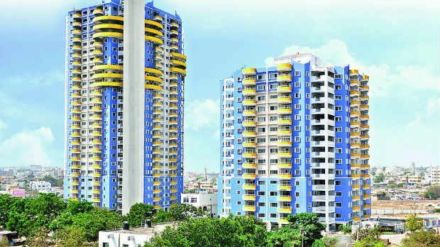As small and unbranded players are moving out of the real estate market, bigger players are increasing their market share and sales.
The cumulative bookings of top nine listed developers showed a compounded annual growth rate (CAGR) of 24% between FY19 and FY 23, and stood at `70,000 crore. According to Anarock Property Consultants, FY23 saw the highest revenues posted by top eight listed players in the last three financial years.
“Customers have definitely moved towards developers with good track record of quality and credibility. This along with the increased disposable income and economic development have enabled purchase of homes with leading developers such as Prestige,” Irfan Razack, CMD, Prestige Estates, said.
Pavitra Shankar, managing director, Brigade Enterprises, said that since 2016, the real estate sector has been subjected to widespread disruptions. As a result, the industry has consolidated substantially with some markets seeing 60% or more players exiting the business, she said.
“The market share of those developers who could withstand the shocks to the system, access capital and deliver quality products on time, thus increased substantially,” Shankar said, adding that the company is aiming for a double-digit growth in the residential portfolio.
Brigade Enterprises has grown at a CAGR of 26% in terms of pre-sale value in the last four years. Experts foresee the trend to continue. Razack added that as long as jobs continue to get created in its key markets such as Bengaluru, Mumbai and Hyderabad, it sees a healthy double-digit CAGR growth in the sales bookings in the coming 2-3 years.
Anuj Puri, chairman of Anarock, said that grade A developers, including the listed developers, continue to corner the market. “If we look back, more than 60% of the 358,000 units launched in 2022 were by branded developers – who also sold more than 55% of the 366,000 units purchased in this period,” he said.
This trend is only continuing this year, and buyers don’t mind paying a little extra because their desire to avoid construction-related risks plays a role.
“We estimate the residential market share of our listed coverage universe has risen to 24% in FY23 from 16% in FY20 at a pan-India level,” said Adhidev Chattopadhyay, vice president at ICICI Securities, in a recent report.
A big reason for the consolidation is that since 2016, the industry saw substantial disruption due to events like demonetisation, RERA, GST, NBFC crisis and the pandemic. All of this forced a number of real estate developers to exit the market. As a result, the ones who demonstrated resilience, secured capital access and maintained quality standards witnessed a significant increase in their market share, said Anand Lakhotia, co-head, real estate funds at Motilal Oswal Alternates.
In addition, smaller players are increasingly aligning with larger counterparts through JDA (joint development and development management) structures. This collaborative approach contributes to the expansion of market share for these listed players.
While the pace of market share gains by bigger players is expected to be slower given the strong market share gains already achieved over FY20-FY23, ICICI Securities estimates the pan-Indian residential market share for its coverage will grow from 24% in FY23 to 27% in FY25.
Surprisingly, listed players had very few launches in the first quarter of FY24, with DLF and Oberoi Realty not having any launches at all. Analysts said typically, there are more launches in the second half due to the festival season. Some also believe that approvals are getting delayed in many cities which are pushing the launch dates.
“With interest rates stabilising and a large part of challenges behind, the sector’s prospects are improving. This positive sentiment is reinforced by consistently strong demand in Tier I cities over the past two years, signalling continued sales strength ahead,” Lakhotia of Motilal Oswal said.
